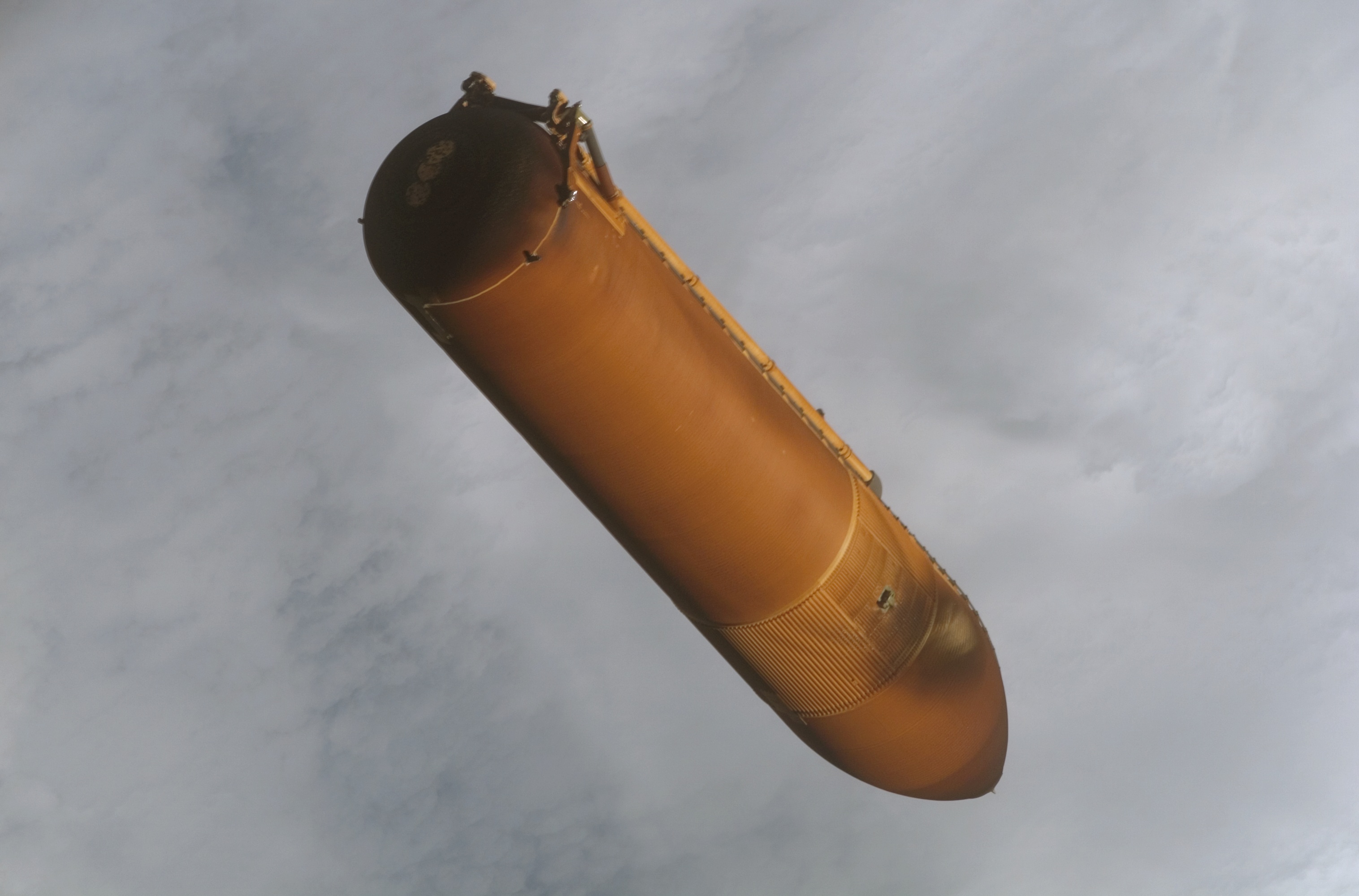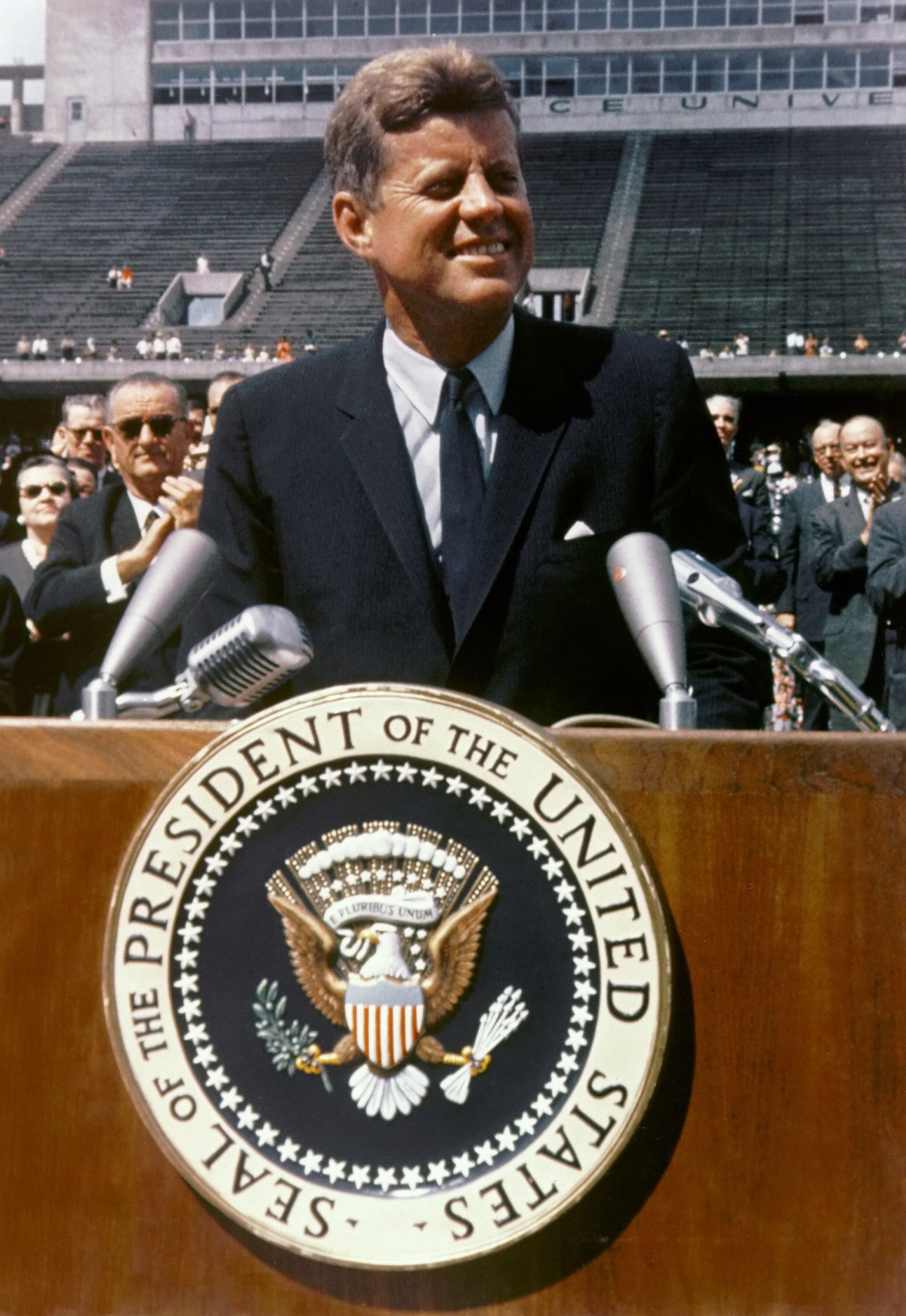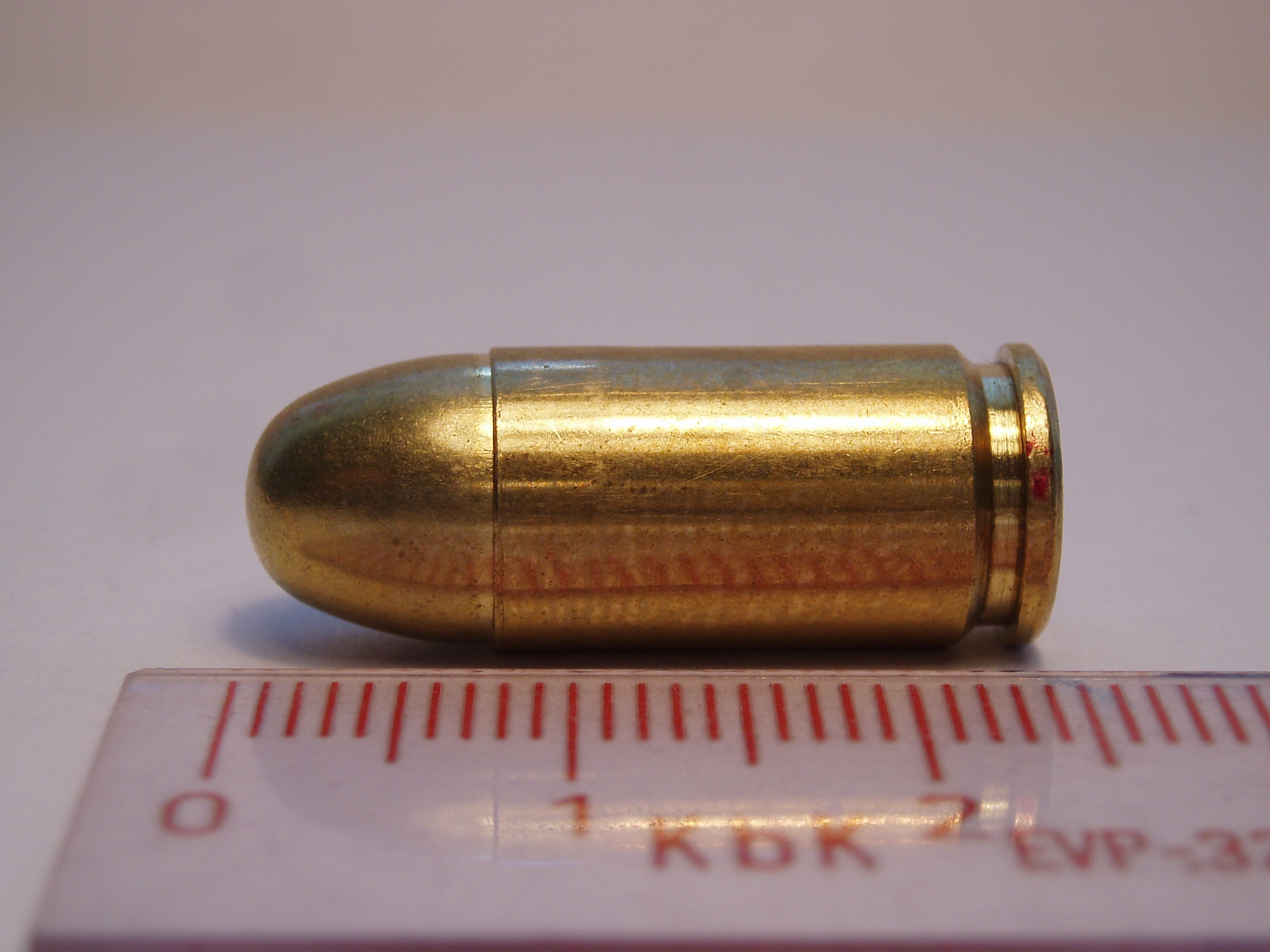|
Newton-second
The newton-second (also newton second; symbol: N⋅s or N s) is the unit of impulse in the International System of Units (SI). It is dimensionally equivalent to the momentum unit kilogram-metre per second (kg⋅m/s). One newton-second corresponds to a one- newton force applied for one second. :\vec F \cdot t = \Delta m \vec v It can be used to identify the resultant velocity of a mass if a force accelerates the mass for a specific time interval. Definition Momentum is given by the formula: :\mathbf = m \mathbf, * \mathbf is the momentum in newton-seconds (N⋅s) or "kilogram-metres per second" (kg⋅m/s) * m is the mass in kilograms (kg) * \mathbf is the velocity in metres per second (m/s) Examples This table gives the magnitudes of some momenta for various masses and speed In kinematics, the speed (commonly referred to as ''v'') of an object is the magnitude of the change of its position over time or the magnitude of the change of its position pe ... [...More Info...] [...Related Items...] OR: [Wikipedia] [Google] [Baidu] |
Power Factor (shooting Sports)
Power factor (PF) in practical shooting competitions refers to a ranking system used to reward cartridges with more recoil. Power factor is a measure of the momentum of the bullet (scaled product of the bullet's mass and velocity), which to some degree reflects the recoil impulse from the firearm onto the shooter (see section on limitations). Power factor is used in competitions sanctioned by the International Practical Shooting Confederation (IPSC), United States Practical Shooting Association (USPSA), Bianchi Cup, Steel Challenge and International Defensive Pistol Association (IDPA). Calculation The PF is based on the bullet's momentum as it is moving through the air by measuring the ''bullet speed'' using a chronograph and measuring a similar ''bullet mass'' on a weighing scale, thereafter calculating the ''power factor'' by the formula: : = \cdot Units The PF can be represented using different units: *The SI-unit '' newton-second'' (kg⋅m/s, or simply N⋅s ... [...More Info...] [...Related Items...] OR: [Wikipedia] [Google] [Baidu] |
Orders Of Magnitude (momentum)
In Newtonian mechanics, momentum (: momenta or momentums; more specifically linear momentum or translational momentum) is the product of the mass and velocity of an object. It is a vector quantity, possessing a magnitude and a direction. If is an object's mass and is its velocity (also a vector quantity), then the object's momentum (from Latin '' pellere'' "push, drive") is: \mathbf = m \mathbf. In the International System of Units (SI), the unit of measurement of momentum is the kilogram metre per second (kg⋅m/s), which is dimensionally equivalent to the newton-second. Newton's second law of motion states that the rate of change of a body's momentum is equal to the net force acting on it. Momentum depends on the frame of reference, but in any inertial frame of reference, it is a ''conserved'' quantity, meaning that if a closed system is not affected by external forces, its total momentum does not change. Momentum is also conserved in special relativity (with a modifi ... [...More Info...] [...Related Items...] OR: [Wikipedia] [Google] [Baidu] |
Impulse (physics)
In classical mechanics, impulse (symbolized by or Imp) is the change in momentum of an object. If the initial momentum of an object is , and a subsequent momentum is , the object has received an impulse : \mathbf=\mathbf_2 - \mathbf_1. Momentum is a Vector (physics), vector quantity, so impulse is also a vector quantity: \sum \mathbf \times \Delta t = \Delta \mathbf. Newton’s second law of motion states that the rate of change of momentum of an object is equal to the resultant force acting on the object: \mathbf=\frac, so the impulse delivered by a steady force acting for time is: \mathbf=\mathbf \Delta t. The impulse delivered by a varying force acting from time to is the integral of the force with respect to time: \mathbf= \int_a^b\mathbf \, \mathrmt. The International System of Units, SI unit of impulse is the newton second (N⋅s), and the dimensional analysis, dimensionally equivalent unit of momentum is the kilogram metre per second (kg⋅m/s). The correspond ... [...More Info...] [...Related Items...] OR: [Wikipedia] [Google] [Baidu] |
Momentum
In Newtonian mechanics, momentum (: momenta or momentums; more specifically linear momentum or translational momentum) is the product of the mass and velocity of an object. It is a vector quantity, possessing a magnitude and a direction. If is an object's mass and is its velocity (also a vector quantity), then the object's momentum (from Latin '' pellere'' "push, drive") is: \mathbf = m \mathbf. In the International System of Units (SI), the unit of measurement of momentum is the kilogram metre per second (kg⋅m/s), which is dimensionally equivalent to the newton-second. Newton's second law of motion states that the rate of change of a body's momentum is equal to the net force acting on it. Momentum depends on the frame of reference, but in any inertial frame of reference, it is a ''conserved'' quantity, meaning that if a closed system is not affected by external forces, its total momentum does not change. Momentum is also conserved in special relativity (with a mo ... [...More Info...] [...Related Items...] OR: [Wikipedia] [Google] [Baidu] |
Impulse (physics)
In classical mechanics, impulse (symbolized by or Imp) is the change in momentum of an object. If the initial momentum of an object is , and a subsequent momentum is , the object has received an impulse : \mathbf=\mathbf_2 - \mathbf_1. Momentum is a Vector (physics), vector quantity, so impulse is also a vector quantity: \sum \mathbf \times \Delta t = \Delta \mathbf. Newton’s second law of motion states that the rate of change of momentum of an object is equal to the resultant force acting on the object: \mathbf=\frac, so the impulse delivered by a steady force acting for time is: \mathbf=\mathbf \Delta t. The impulse delivered by a varying force acting from time to is the integral of the force with respect to time: \mathbf= \int_a^b\mathbf \, \mathrmt. The International System of Units, SI unit of impulse is the newton second (N⋅s), and the dimensional analysis, dimensionally equivalent unit of momentum is the kilogram metre per second (kg⋅m/s). The correspond ... [...More Info...] [...Related Items...] OR: [Wikipedia] [Google] [Baidu] |
Space Shuttle External Tank
The Space Shuttle external tank (ET) was the component of the Space Shuttle launch vehicle that contained the liquid hydrogen fuel and liquid oxygen oxidizer. During lift-off and ascent it supplied the fuel and oxidizer under pressure to the three RS-25 main engines in the orbiter. The ET was jettisoned just over 10 seconds after main engine cut-off (MECO) and it re-entered the Earth's atmosphere. Unlike the Solid Rocket Boosters, external tanks were not re-used. They broke up before impact in the Indian Ocean (or Pacific Ocean in the case of direct-insertion launch trajectories), away from shipping lanes and were not recovered. Overview The ET was the largest element of the Space Shuttle, and when loaded, it was also the heaviest. It consisted of three major components: * the forward liquid oxygen (LOX) tank * an unpressurized intertank that contains most of the electrical components * the aft liquid hydrogen (LH2) tank; this was the largest part, but it was relatively l ... [...More Info...] [...Related Items...] OR: [Wikipedia] [Google] [Baidu] |
Space Shuttle Orbiter
The Space Shuttle orbiter is the spaceplane component of the Space Shuttle, a partially reusable launch system, reusable orbital spaceflight, orbital spacecraft system that was part of the discontinued Space Shuttle program. Operated from 1981 to 2011 by NASA, the U.S. space agency, this vehicle could carry astronauts and payloads into low Earth orbit, perform in-space operations, then atmospheric entry, re-enter the atmosphere and land as a glider aircraft, glider, returning its crew and any on-board payload to the Earth. Six orbiters were built for flight: ''Space Shuttle Enterprise, Enterprise'', ''Space Shuttle Columbia, Columbia'', ''Space Shuttle Challenger, Challenger'', ''Space Shuttle Discovery, Discovery'', ''Space Shuttle Atlantis, Atlantis'', and ''Space Shuttle Endeavour, Endeavour''. All were built in Palmdale, California, by the Pittsburgh, Pennsylvania-based Rockwell International company's North American Aircraft Operations branch. The first orbiter, ''Enterpris ... [...More Info...] [...Related Items...] OR: [Wikipedia] [Google] [Baidu] |
Multistage Rocket
A multistage rocket or step rocket is a launch vehicle that uses two or more rocket ''stages'', each of which contains its own engines and propellant. A ''tandem'' or ''serial'' stage is mounted on top of another stage; a ''parallel'' stage is attached alongside another stage. The result is effectively two or more rockets stacked on top of or attached next to each other. Two-stage rockets are quite common, but rockets with as many as five separate stages have been successfully launched. By jettisoning stages when they run out of propellant, the mass of the remaining rocket is decreased. Each successive stage can also be optimized for its specific operating conditions, such as decreased atmospheric pressure at higher altitudes. This ''staging'' allows the thrust of the remaining stages to more easily accelerate the rocket to its final velocity and height. In serial or tandem staging schemes, the first stage is at the bottom and is usually the largest, the second stage and subse ... [...More Info...] [...Related Items...] OR: [Wikipedia] [Google] [Baidu] |
Space Shuttle Solid Rocket Booster
The Space Shuttle Solid Rocket Booster (SRB) was the first solid-propellant rocket to be used for primary propulsion on a vehicle used for human spaceflight. A pair of them provided 85% of the Space Shuttle's thrust at liftoff and for the first two minutes of ascent. After burnout, they were jettisoned, and parachuted into the Atlantic Ocean, where they were recoverable booster, recovered, examined, refurbished, and reusable launch system, reused. The Space Shuttle SRBs were the most powerful solid rocket motors to ever launch humans. The Space Launch System (SLS) SRBs, adapted from the shuttle, surpassed it as the most powerful solid rocket motors ever flown, after the launch of the Artemis 1 mission in 2022. Each Space Shuttle SRB provided a maximum thrust, roughly double the most powerful single-combustion chamber liquid-propellant rocket engine ever flown, the Rocketdyne F-1. With a combined mass of about , they comprised over half the mass of the Shuttle stack at liftoff. ... [...More Info...] [...Related Items...] OR: [Wikipedia] [Google] [Baidu] |
Apollo 11
Apollo 11 was a spaceflight conducted from July 16 to 24, 1969, by the United States and launched by NASA. It marked the first time that humans Moon landing, landed on the Moon. Commander Neil Armstrong and Lunar Module pilot Buzz Aldrin landed the Lunar Module Eagle, Lunar Module ''Eagle'' on July 20, 1969, at 20:17 Coordinated Universal Time, UTC, and Armstrong became the first person to step onto the Moon's surface six hours and 39 minutes later, on July 21 at 02:56 UTC. Aldrin joined him 19 minutes later, and they spent about two and a quarter hours together exploring the site they had named Tranquility Base upon landing. Armstrong and Aldrin collected of lunar material to bring back to Earth as pilot Michael Collins (astronaut), Michael Collins flew the Command Module Columbia, Command Module ''Columbia'' in lunar orbit, and were on the Moon's surface for 21 hours, 36 minutes, before lifting off to rejoin ''Columbia''. Apollo 11 was launched by a Saturn V rocket from ... [...More Info...] [...Related Items...] OR: [Wikipedia] [Google] [Baidu] |
Anti-material
An anti-materiel rifle (AMR) is a rifle designed for use against military equipment, structures, and other hardware (materiel) targets. Anti-materiel rifles are chambered in significantly larger calibers than conventional rifles and are employed to eliminate equipment such as engines and unarmored or lightly armored targets. Although not originally designed for use against human targets, the bullet weight and velocity of anti-materiel rifles gives them exceptional long-range capability even when compared with designated sniper rifles. Anti-materiel rifles are made in both bolt-action and semi-automatic designs. The anti-materiel rifle originated in the anti-tank rifle, which itself originated during World War I. While modern tanks and most other armored vehicles are too well protected to be affected by anti-materiel rifles, the guns are still effective for attacking unarmored or lightly armored vehicles. They can also be used against stationary enemy aircraft, missile launchers, ... [...More Info...] [...Related Items...] OR: [Wikipedia] [Google] [Baidu] |
9mm Parabellum
This is a list of firearm cartridges that have bullets in the to caliber range. *''Case length'' refers to the round case Case or CASE may refer to: Instances * Instantiation (other), a realization of a concept, theme, or design * Special case, an instance that differs in a certain way from others of the type Containers * Case (goods), a package of relate ... length. *''OAL'' refers to the overall length of the loaded round. All measurements are given in millimeters, followed by the equivalent in inches between parentheses. *Ammunition or cartridge specification is usually the "cartridge maximum" specification and may not be the same as the nominally measured dimensions of production, remanufactured, or hand-loaded ammunition. * SAAMI and the CIP publish cartridge data. Pistol cartridges Revolver cartridges Rifle cartridges See also * .38 caliber * 9mm Major References {{Firearm cartridge calibers Pistol and rifle cartridges de:9 mm ... [...More Info...] [...Related Items...] OR: [Wikipedia] [Google] [Baidu] |






